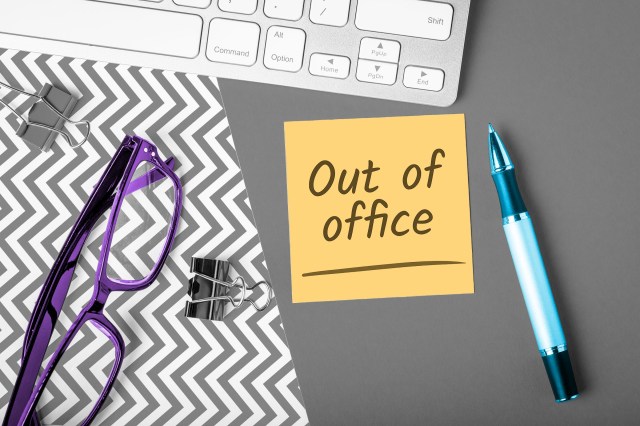
Labor Day Started as a New York City Parade
On the morning of September 5, 1882, some 20,000 union workers marched through lower Manhattan. According to one newspaper report, the crowd was filled with “men on horseback, men wearing regalia, men with society aprons, and men with flags, musical instruments, badges, and all the other paraphernalia of a procession.” The parade celebrated the labor of the city’s union workers, who actually had to sacrifice a day’s pay in order to attend the celebration — but what a celebration it was. After the parade, 25,000 union members and their families filled Wendel’s Elm Park at 92nd Street and Ninth Avenue for a post-parade party, where beer kegs were “mounted in every conceivable place.” On September 5 the next year, New York’s Central Labor Union celebrated its second Labor Day parade, and the late summer holiday became a tradition.

The Holiday Was First Recognized by Oregon in 1887
Although New York held the first parades and even introduced the first legislation recognizing Labor Day, Oregon was actually the first to officially recognize the holiday, on February 21, 1887 (though the state reserved the first Saturday in June for Labor Day, rather than early September). Within the same year, Colorado, Massachusetts, New Jersey, and New York followed suit. It wasn’t until 1894 that Congress solidified Labor Day as a national holiday — the legislation was signed into law by then-President Grover Cleveland.

Most Countries Don’t Celebrate Workers in September
While reserving the first Monday in September for Labor Day hearkens back to the holiday’s New York origins, the decision was also designed to distract from a more unsavory moment in the history of U.S. labor relations. Most countries around the world actually celebrate unions and workers on May 1, otherwise known as International Workers’ Day. This international holiday actually has its origins in the U.S., when a clash between Chicago police and workers in 1886 left several dead and dozens injured. Known as the Haymarket Riot, the event went on to inspire International Workers’ Day in 1889. Uneasy honoring such a bloody moment in U.S. history — especially one that inspired widespread vitriol against labor unions — Congress and President Cleveland opted for a different date entirely.
More Interesting Reads

There Was a Labor Day Before There Was a U.S. Department of Labor
Although the 19th century gave birth to what eventually became Labor Day — along with many other important historical moments that defined the worker’s struggle in both America and the world — the U.S. Labor Department wasn’t established until more than three decades after that first parade down New York City’s streets. Although the U.S. did establish the Bureau of Labor Statistics in 1884 and the Department of Commerce and Labor in 1903, the modern U.S. Department of Labor wasn’t created until 1913, when lame duck President William Howard Taft reluctantly signed it into law. Taft had such strong concerns about the bill (he thought it would hinder efficient administration) that he only signed it into law mere hours before his successor, Woodrow Wilson, took office. Today, the Department of Labor oversees labor laws, guarantees workers’ rights, and ensures safe working conditions. In 1933 — two decades after its creation — the department also became the first to be led by a woman, Secretary Frances Perkins (who was later recognized as a saint in the Episcopal Church).

137 Million Americans Traveled for Labor Day in 2022
According to a survey conducted by The Vacationer, 53% of Americans traveled on Labor Day weekend in 2022, which equates to some 137 million people. This figure narrowly surpassed both Memorial Day and the Fourth of July as the busiest travel weekend in the U.S. Although most of that travel (about 36%) occurred via car, airports also tend to see a serious uptick of Americans traveling to popular domestic locations, such as New York, Los Angeles, or San Francisco, or even catching international flights to London, Rome, or Tokyo. In 2022, the Transportation Security Administration screened 8.76 million travelers — exceeding pre-pandemic numbers — with Friday marking the busiest day of the weekend.

Yes, You Can Definitely Wear White After Labor Day
The color white has its advantages during the summer, as it’s the best hue (or combination of all hues) to reflect the sun’s rays, but why is there an informal rule forbidding the color after summer is over? The roots of the rule date back to the 19th century as a means for upper-class women to distinguish themselves. The idea was that white clothes were only appropriate for weddings and resort wear, and because Labor Day stood in as the unofficial end of summer (though the astronomical end occurs weeks later), white shouldn’t be worn after Labor Day. If you’re looking for logic, there isn’t any — it was just an arbitrary rule meant to exclude those who didn’t have well-established fortunes and were less in the know. Somehow, this arbitrary rule survived more than a century, though it isn’t really recognized today — even if that doesn’t stop some people from still mentioning this pernicious piece of class warfare.











